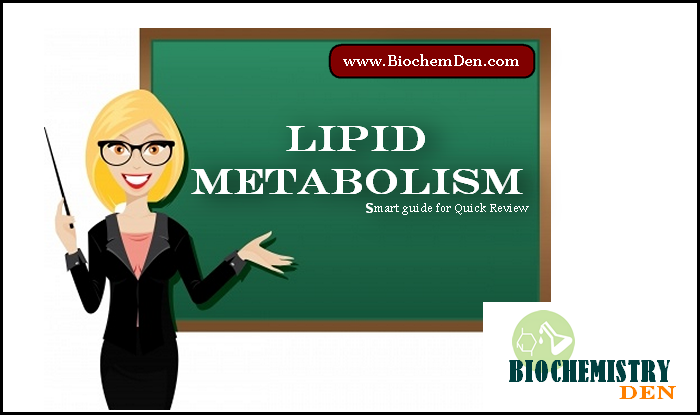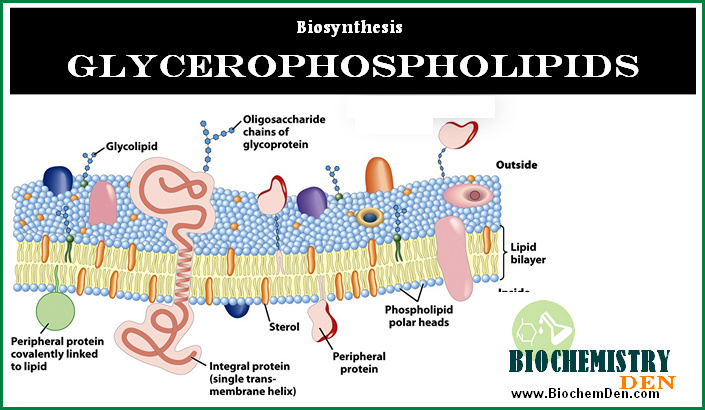Alpha-oxidation of fatty acids is a process that occurs in the peroxisomes of cells. It involves the degradation of branched-chain fatty acids, such as phytanic acid, produced by the body or obtained through dietary intake. This article will provide a detailed overview of the definition, location, pathway, steps, and significance of alpha oxidation of fatty acids.
Definition of Alpha Oxidation of Fatty Acids
Alpha oxidation of fatty acids is a metabolic process that involves the degradation of branched-chain fatty acids in the peroxisomes of cells. It is an alternative pathway to beta-oxidation, the primary process for the degradation of long-chain fatty acids in the mitochondria of cells.

Location of Alpha Oxidation of Fatty Acids
Alpha oxidation of fatty acids occurs in the peroxisomes of cells, which are organelles that contain enzymes responsible for various metabolic processes. The peroxisomes metabolize many different types of molecules, including fatty acids, amino acids, and purines.
Pathway of Alpha Oxidation of Fatty Acids
The pathway of alpha oxidation of fatty acids involves several steps. The first step is activating the branched-chain fatty acid, which is carried out by an enzyme called acyl-CoA synthetase. The activated fatty acid is then transported into the peroxisome, where the enzyme acyl-CoA oxidase oxidizes it.
The next step in the pathway is the cleavage of the fatty acid molecule, which is carried out by an alpha-methyl acyl-CoA racemase enzyme. This results in the formation of a shorter-chain fatty acid, which can then undergo beta-oxidation in the mitochondria.
The final step in the pathway is converting the shorter-chain fatty acid to acetyl-CoA, which can then enter the citric acid cycle for energy production.
Steps of Alpha Oxidation of Fatty Acids
Alpha oxidation is a metabolic pathway that occurs in some organisms to break down fatty acids with an odd number of carbon atoms. This pathway involves a series of steps that ultimately produce acetyl-CoA, which can enter the citric acid cycle for energy production. In this answer, we will discuss the steps of alpha oxidation of fatty acids, including equations and suitable headings.
R-CH2-CH2-CH2-COOH (Long-chain fatty acid: n-carbon) ->
R-CH2-CH2-CHOH-COOH (2-hydroxy fatty acid)
R-CH2-CH2-CHOH-COOH (2-hydroxy fatty acid) -> R-CH2-CH2-COOH (long chain fatty acid: n-1 carbon)+ CO2
R-CH2-CH2-COOH (long-chain fatty acid: n-1 carbon) ->
R-CH2-CH2-CO-COOH (2-keto fatty acid)
- Step 1: Hydroxylation with Mono Oxigenase
- Step 2: Oxidative decarboxylation
Overview of alpha oxidation
Alpha oxidation is a process that primarily occurs in peroxisomes, which are specialized organelles found in eukaryotic cells. The process begins with the oxidation of the alpha-carbon of a fatty acid with an odd number of carbons to form a dicarboxylic acid, which can be further metabolized to produce acetyl-CoA.
The alpha oxidation system plays a key role in the capacity of mammalian tissues to oxidize phytanic acid. It is an oxidation product of phytol and is present in animal fat, cow’s milk, and foods derived from milk.

Activation of fatty acid
The first step in alpha oxidation is the activation of the fatty acid. This process involves the attachment of a CoA molecule to the carboxyl group of the fatty acid, forming
an acyl-CoA molecule. The activation is catalyzed by an enzyme called acyl-CoA synthetase and requires the hydrolysis of ATP to provide energy for the reaction. The equation for this step is:
Fatty acid + ATP + CoA → Acyl~CoA + AMP + PPi
Oxidation of the alpha-carbon
Once the fatty acid is activated, the next step is the oxidation of the alpha-carbon. This process involves the removal of two electrons and two protons from the alpha-carbon, which is catalyzed by an enzyme called alpha-hydroxy acid dehydrogenase. The resulting product is an alpha-hydroxy acid with a hydroxyl group attached to the alpha-carbon. The equation for this step is:
Acyl-CoA + O2 + H2O → alpha-hydroxy acid + H2O2 + CoA
Conversion to a dicarboxylic acid
The next step in alpha oxidation is converting the alpha-hydroxy acid to a dicarboxylic acid.
This process involves the oxidation of the hydroxyl group to a carbonyl group, followed by the cleavage of the carbon-carbon bond between the alpha- and beta-carbons. The resulting product is a dicarboxylic acid with two carboxyl groups on adjacent carbon atoms. The equation for this step is:
Alpha-hydroxy acid → dicarboxylic acid + NADH + H+
Thiolysis of dicarboxylic acid
The final step in alpha oxidation is the thiolysis of the dicarboxylic acid. This process involves the cleavage of the dicarboxylic acid by an enzyme called thiolase, which releases a molecule of acetyl-CoA and a shorter dicarboxylic acid. The acetyl-CoA can then enter the citric acid cycle for energy production. The equation for this step is:
Dicarboxylic acid + CoA → Acetyl-CoA + Shorter dicarboxylic acid
Regulation of alpha oxidation
The rate of alpha oxidation is regulated by several factors, including the availability of oxygen, the concentration of fatty acids, and the activity of the enzymes involved in the pathway. In addition, defects in the enzymes involved in alpha oxidation can lead to metabolic disorders such as Refsum’s disease and Zellweger syndrome.
Alpha oxidation is an important metabolic pathway that allows organisms to break down fatty acids with an odd number of carbon atoms. The process involves:
- The activation of the fatty acid.
- The oxidation of the alpha-carbon.
- The conversion to a dicarboxylic acid.
- The thiolysis of the dicarboxylic acid produces acetyl-CoA.
Various factors regulate the pathway, and defects in the enzymes involved can lead to metabolic disorders.
Salient features of alpha oxidation
- Only free long-chain fatty acids serve as a substrate
- Molecular oxygen is indirectly involved
- It does not require CoA intermediates
- It does not lead to the generation of high-energy phosphates.
Significance of Alpha Oxidation of Fatty Acids
Alpha oxidation is an important metabolic pathway with more significance in the body. In this answer, we will discuss the significance of alpha oxidation of fatty acids with proper side headings and points.
a. Energy production
The primary significance of alpha oxidation is the production of energy. The acetyl-CoA produced by the thiolysis of the dicarboxylic acid can enter the citric acid cycle, where it is oxidized to produce ATP, the main energy currency of the cell.
b. Elimination of toxic metabolites
Another significance of alpha oxidation is the elimination of toxic metabolites. Fatty acids with an odd number of carbon atoms cannot be metabolized by beta-oxidation, which is the primary pathway for fatty acid catabolism. Instead, they are metabolized by alpha oxidation, which produces dicarboxylic acids that can be excreted in the urine.
c. Role in lipid metabolism
Alpha oxidation also plays a role in lipid metabolism. In some organisms, the pathway synthesizes long-chain fatty acids and sphingolipids. The dicarboxylic acids
produced by alpha oxidation can also be converted into other lipid molecules.
d. Regulation of fatty acid levels
Alpha oxidation may also play a role in regulating the levels of fatty acids in the body. Studies have suggested that defects in the pathway may lead to the accumulation of fatty acids, which can contribute to metabolic disorders such as insulin resistance and obesity.
e. Role in developmental processes
Finally, alpha oxidation may play a role in developmental processes. Studies have shown that gene mutations in the pathway can lead to developmental abnormalities in the brain, liver, and other organs.
In conclusion, alpha oxidation is a significant metabolic pathway that plays an important role in energy production, the elimination of toxic metabolites, lipid metabolism, regulation of fatty acid levels, and developmental processes.
Disorders associated with alpha oxidation
a. Genetic disorders affecting alpha oxidation
Genetic disorders affecting alpha oxidation are rare but can be severe. The most common of these disorders is alpha-methyl acyl-CoA racemase (AMACR) deficiency, which affects the enzyme responsible for the decarboxylation step in the alpha oxidation pathway.
b. Symptoms and effects of alpha oxidation disorders
Symptoms of alpha oxidation disorders can include neurological problems, liver dysfunction, muscle weakness, and developmental delays. These disorders can be diagnosed through genetic testing, and treatment may involve dietary changes or medication to manage symptoms.
Diagnosis and treatment of alpha oxidation disorders
Early diagnosis and management are essential in preventing serious health complications concerning alpha oxidation disorders. The diagnostic tests for alpha oxidation disorders include:
- Measuring the levels of certain fatty acids in the blood or urine.
- Performing genetic testing.
- Conducting enzyme activity tests.
While there is no known cure for alpha oxidation disorders, the treatment options aim to manage symptoms and prevent complications. It may include dietary modifications such as a low-fat diet, taking supplements such as L-carnitine, and managing any associated health complications through medications or surgery.
a. Diagnostic tests for alpha oxidation disorders
Several diagnostic tests are used to identify alpha oxidation disorders. The most common tests include measuring the levels of certain fatty acids in the blood or urine, which can help detect any abnormalities in the alpha oxidation process. Genetic testing can also be performed to identify any underlying genetic mutations causing the disorder. Enzyme activity tests can also be conducted to determine if there are any issues with the enzymes responsible for alpha oxidation.
b. Treatment options for alpha oxidation disorders
There is currently no cure for alpha oxidation disorders, so the treatment options aim to manage symptoms and prevent complications. It may include dietary modifications such as a low-fat diet, which can help reduce the amount of fatty acids that need to be oxidized. Taking supplements such as L-carnitine can also help improve the body’s ability to transport fatty acids into the mitochondria for oxidation. Managing any associated health complications through medications or surgery may also be necessary to prevent further complications.
Future research directions in alpha oxidation
Research in alpha oxidation is ongoing, focusing on identifying potential therapeutic targets and improving our understanding of the underlying mechanisms involved in the process.
a. Potential therapeutic targets for alpha oxidation disorders
One potential therapeutic target for alpha oxidation disorders is the enzyme that generates peroxisomal hydrogen peroxide, which is essential for the alpha oxidation process. Targeting this enzyme may help improve the efficiency of the alpha oxidation process and reduce symptoms. Other potential targets include the enzymes responsible for transporting fatty acids into the mitochondria and the enzymes involved in the final steps of the alpha oxidation process.
b. Current research advancements in alpha oxidation
Recent studies have identified new genetic mutations associated with alpha oxidation disorders, which may help improve diagnosis and management. Other studies have focused on improving our understanding of the underlying mechanisms involved in alpha oxidation, which may lead to new therapeutic approaches. Additionally, research is underway to develop new tools and techniques to study alpha oxidation more effectively.
Frequently Asked Questions (FAQs)
What is alpha oxidation of fatty acids?
Alpha oxidation is a metabolic pathway that breaks down fatty acids with an odd number of carbon atoms into dicarboxylic acids, which can be metabolized to produce energy or excreted in the urine.
What is the significance of alpha oxidation?
Alpha oxidation plays multiple roles in the body, including energy production, elimination of toxic metabolites, regulation of fatty acid levels, lipid metabolism, and developmental processes.
What types of fatty acids are metabolized by alpha oxidation?
Alpha oxidation is primarily responsible for the catabolism of fatty acids with an odd number of carbon atoms, which cannot be metabolized by beta-oxidation, the primary pathway for fatty acid catabolism.
What are the enzymes involved in alpha oxidation?
The enzymes involved in alpha oxidation include acyl-CoA dehydrogenase, 2-enoyl-CoA hydratase, 3-hydroxy acyl-CoA dehydrogenase, and 3-ketoacyl-CoA thiolase.
What are some disorders associated with defects in alpha oxidation?
Defects in alpha oxidation can lead to metabolic disorders such as Zellweger syndrome, X-linked adrenoleukodystrophy, and adult Refsum disease. These disorders are characterized by the body’s accumulation of fatty acids and other metabolites.
How is alpha oxidation regulated?
Various factors regulate alpha oxidation, including hormonal signals, substrate availability, and enzyme activity. Other metabolic pathways, such as beta-oxidation and the citric acid cycle, influence the pathway.
Conclusion and summary of alpha oxidation of fatty acids
Alpha oxidation is a complex process that plays a critical role in the metabolism of certain fatty acids. Alpha oxidation disorders can lead to serious health complications, and early diagnosis and management are essential in preventing further complications.
While there is currently no cure for alpha oxidation disorders, ongoing research is focused on identifying new therapeutic targets and improving our understanding of the underlying mechanisms involved in the process. In conclusion, alpha oxidation of fatty acids is an essential metabolic pathway responsible for breaking fatty acids into energy.
Although rare, disorders associated with alpha oxidation can have severe implications for affected individuals. Through continued research and development, there is hope for improved diagnostic and therapeutic strategies to address these disorders.
The insights gained from studying alpha oxidation will undoubtedly contribute to a better understanding of fatty acid metabolism and the complex processes that govern energy production in the body.
Discover more from Biochemistry Den
Subscribe to get the latest posts sent to your email.





